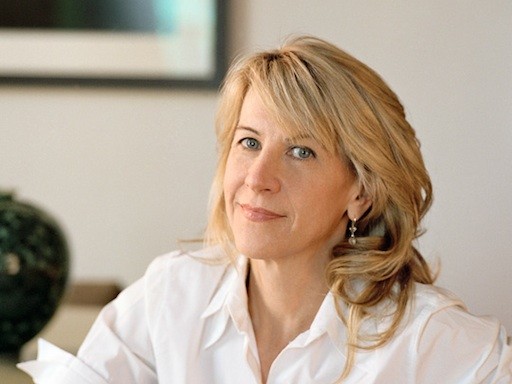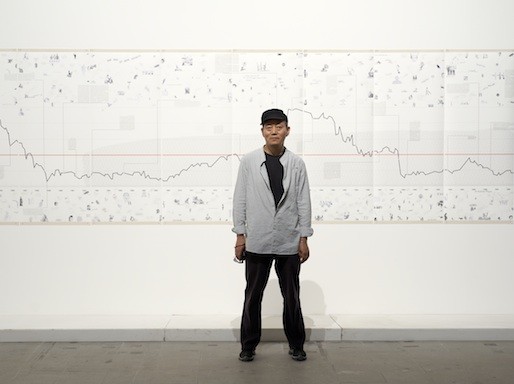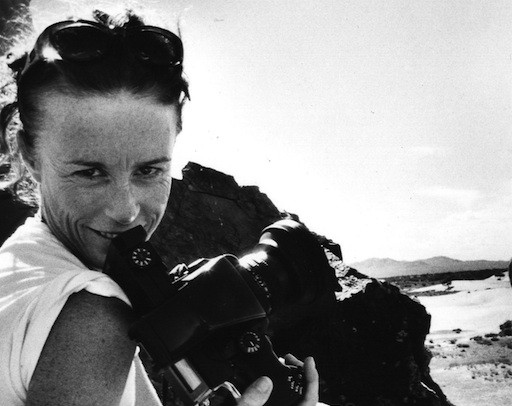The New York-based, Israeli-born artist Naama Tsabar creates performances and installations that draw on her experience playing in a band and bartending at night clubs—a potent influence that allows her work to engage the aesthetics of high Modernism with a playful liveliness. We spoke to Tsabar about her other, art-historical sources of inspiration, and her desire for women to be given more prominence in the art world.
What are you working on now?
I am working on several new projects. My biggest upcoming work is a project for the Tel Aviv Museum of Art—a new installation that will make use of architecture and stage amplification to create a performative environment. With this new project I am interested in the way expressive action propagates through architecture, and in exploring intimacy and displacement in the museum space.
What made you want to become an artist?
My father. Specifically, a painting he made for the bathroom in my kindergarten school. I guess it had to do with communicating to us kids to keep the bathroom clean, but for me it was more than that. It was my father's painting and it was hung high and it was beautiful.
What was your first significant art experience?
When I started learning and making art in high school, discovering through art history classes the different relationships between form and concept.
How has your work changed over the course of your career?
There used to be a clearer distinction in my work between performance and installation works, but I feel that in the last three years the borders have become blurred and I have gained more flexibility in combining the two, which has rendered my installation more process-based. I like to stay with my work after I finished installing and breathe history and life into them. As my career progresses, I actually feel freer to explore, and I try to put my work in situations where I have to give up some control.
Where do you look for inspiration?
Everywhere! Because I tend to be inverted at times, I am tuned to situations that penetrate and are more extreme and all-embracing. I am also really inspired by other artists.
What do you hope other people get out of your art?
A sensual experience that with distance and time translates into meaningful ideas and thoughts. I hope people are able to experience moments of intimacy with my artworks.
What's your favorite thing you've ever made?
I believe I haven't made it yet.
What would you be doing if you weren't an artist?
If I wasn't a visual artist I would like to be a dancer or choreographer, working with body and movement.
What is indispensable in your studio?
The open free space—the one that's not used. Moving between many studios over the last five years, I found that the size and scope of my work is really influenced by the size and shape of my studio. The studio is a thinking and desiring capsule—the space inside it is an extension of my brain, and I need empty space to think in.
What do you collect yourself?
Nothing at the moment, though I used to collect CDs. It takes a lot from me to commit to an object.
Is there any other art-historical period that you wish you could have lived through?
I make an effort to live in the present.
Who is your favorite living artist?
My current art crush is Tatiana Trouvé.
Who is your favorite historical artist?
There are many, but Louise Bourgeois, Eva Hesse, and Hannah Hoch are a few.
What is your favorite place to see art?
I was really impressed with the Schaulager Museum in Basel, Switzerland—by the depth and scope of their exhibitions and the dedication the institute has to contemporary art.
What artwork or art destination would you most like to see?
I am looking forward to visiting Joshua Tree this year, and hopefully Marfa as well.
What book has had the biggest impact on your work, or life?
Growing up I had a fascination with Yona Wallach, an Israeli poet from the '60s through to the '80s. Wallach lived her life on the edge. In her poems she explored the borders of the self, the body, and the erotic, touching upon subjects such as death, fear, and madness.
What artist or artists do you think should enjoy greater recognition?
In general I think the art world, art institutions, and art market should make an effort to support, show, study, and buy more works by women.
If you could get any artist to do your portrait, who would you choose?
























